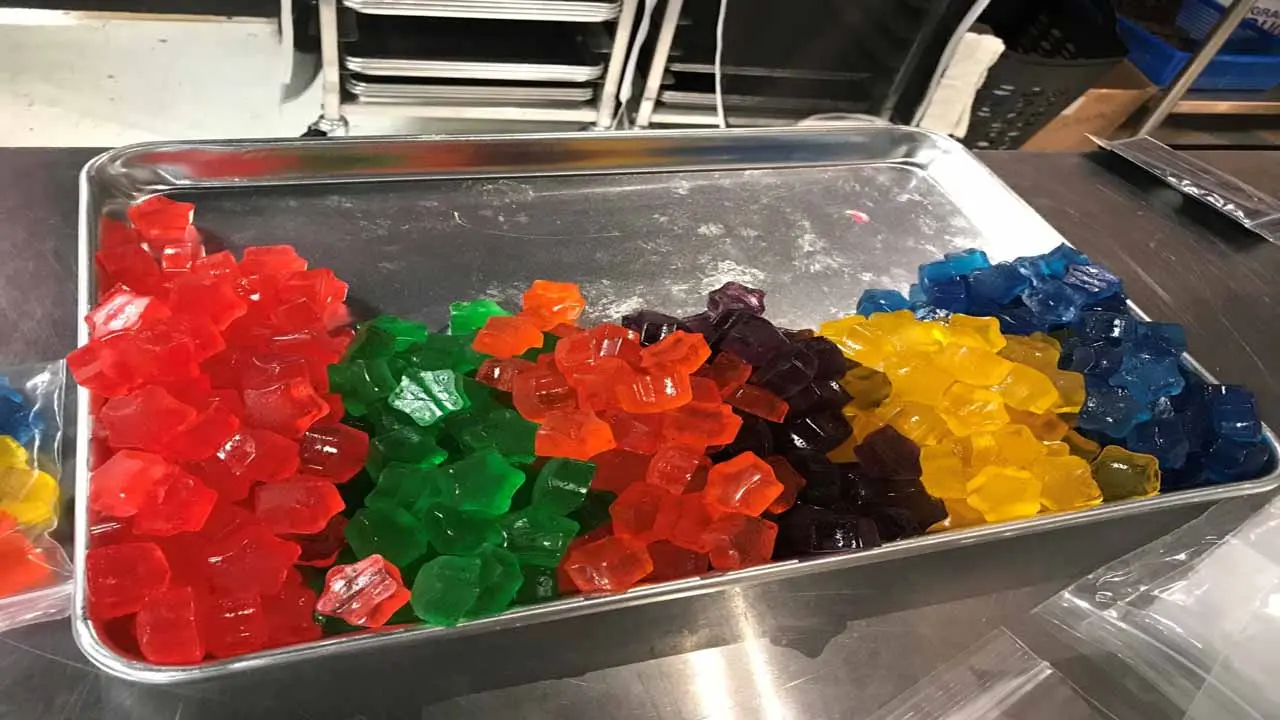Is pectin or gelatin the right gelling agent for your cannabis gummies?
By
Kristen Nichols, Hemp Editor
January 19, 2022 - Updated January 19, 2022
Gummies are the undisputed champions of edible cannabis, with sales that dwarf all other category form factors.
According to Seattle-based cannabis analytics firm Headset, gummies accounted for $602 million in sales through the first nine months of 2021.
The next-largest edibles segment was chocolate with less than $100 million in reported sales for the same period.
But success in the crowded gummies sector doesn’t come easy.
Manufacturers hoping to stand out in the gummy game must look beyond the THC or CBD they’re infusing and think carefully about the delivery ingredients they’re using with cannabinoids.
Gelling agents keep gummies together and let the flavors pop. They can be smooth, chewy or so soft they melt in your mouth.
Gelling agents, usually pectin or gelatin, also play an outsize role in a gummy’s texture and finish.
“The pectin or the gelatin is the main thing in the gummies that’s helping keep them congealed together,” said Ashley Huber, innovation officer at Global Widget, a Tampa, Florida, company that makes CBD gummies.
“So it’s giving it its texture and holding all of the ingredients in there, giving a nice taste to the gummy.”
But there are key differences in price and performance – and understanding those differences can help unlock success in the giant sector.
To find out more about choosing the right gelling agent, pectin or gelatin,
MJBizDaily went straight to formulation experts.
Here are their top four considerations:
1. Know the differences
Gelatin comes from animals, usually pigs. Collagen is taken from the animals’ skin, bones and connective tissue and converted into a flavorless binding agent used in a dizzying variety of common foods and confections.
Cows and fish can also be sources of gelatin for manufacturers looking to make kosher or halal products.
But gelatin always comes from an animal. Even products that don’t seem meaty commonly include gelatin, such as Altoids mints.
Pectin, on the other hand, comes from the cell walls of vegetables and fruits, usually citrus. Pectin is vegan and a common gelling agent for fruit jams and jellies.
(Gummies can also be made with a starch-based gelling agent, which is used for Sour Patch Kids mainstream candies. But starch gelling agents require expensive equipment and aren’t used in the smaller cannabis market, formulators say.)
Speaking on Global Widget’s CPG and CBD University podcast, Huber said that the two common gelling agents – gelatin and pectin – produce different results.
“Pectin tends to hold more of a firm texture, where gelatin is more jelly-based,” she said.
Those different textures are a key consideration, said Shiaosan Williams-Sheng, director of innovation for Plus Products, which makes THC and CBD gummies in San Mateo, California.
“With pectin, you’ve got a very short, kind of hard texture,” she said. “So when you bite through, there’s no resistance. It’s like a really clean, kind of snappy experience.
“Whereas gelatin, it’s more elastic. It’s firm, but it’s yielding. You can kind of go on a spectrum from fairly bouncy to quite tender, depending on the volume of gelatin that you’re using.”
Gelatin is also more forgiving. A candymaker who isn’t happy with a gelatin gummy can melt it down and start over. Pectin, on the other hand, can’t be reformulated once it has solidified.
2. Consider the price
Another key differential between pectin and gelatin is price.
Gelatin is cheaper, but depending on the desired final product, manufacturers could need much more of it than they would if they used pectin.
Gummies made with pectin usually come in at about 1% pectin, Williams-Sheng said.
For gummies made with gelatin, though, the final products are more generally 6%-9% gelatin.
Pectin sells for about $25 per kilogram ($11 per pound). Wholesale gelatin is much cheaper, about $5-$6 per pound, manufacturers said.
So manufacturers looking to make vegan gummies should know going in that they’ll cost more. Some consider it an investment worth making.
“We definitely draw the line with the gelatin made from skin, bones or any kind of animal products to get that gummy consistency that you get in traditional gummies,” said Paola Fernandez, whose company, High Hemp Co., in Orlando, Florida, makes vegan CBD gummies.
3. Check the temperature
Gelatin might be cheaper to buy, but it’s more expensive to store.
That’s because gelatin melts when warm – sometimes only as warm as 85 degrees Fahrenheit – so it requires refrigerated transit and storage.
Many early cannabis gummy makers were hounded by complaints that their gummies turned into hunks of congealed goo by the time consumers opened the packaging.
Adding a touch of pectin to gelatin gummies can help raise the melting point, Huber said.
“When shipping, we want to make sure that we can get the gummy’s melting temp as high as possible, and the pectin inside of a gelatin gummy is always going to give us just a few more degrees to keep it from melting,” she said.
“You can go from 90-something to about 104 degrees Fahrenheit melting temperature so that when you transport it, you have a little less likelihood of it melting.”
4. Think of consumers first
After learning the differences between pectin and gelatin, manufacturers have one more consideration to make.
And that is the most important step: making a product that appeals to the consumer you have in mind, said Ari Mayer Mackler, Plus Products’ chief product officer.
He said product formulators use “organoleptic” profiling – what he described as a “fancy word” for a product’s taste, sight, smell and touch.
“Think what you’re trying to accomplish,” he said. “Some people like this type of gummy, others might want a different, chewier kind.
“What’s more important to your consumer? Is it how it tastes, or is it the knowledge that, ‘Hey, it’s vegan?’ …
“Take a step back from a dollars-and-cents perspective.”
Kristen Nichols can be reached at kristen.nichols@hempindustrydaily.com.